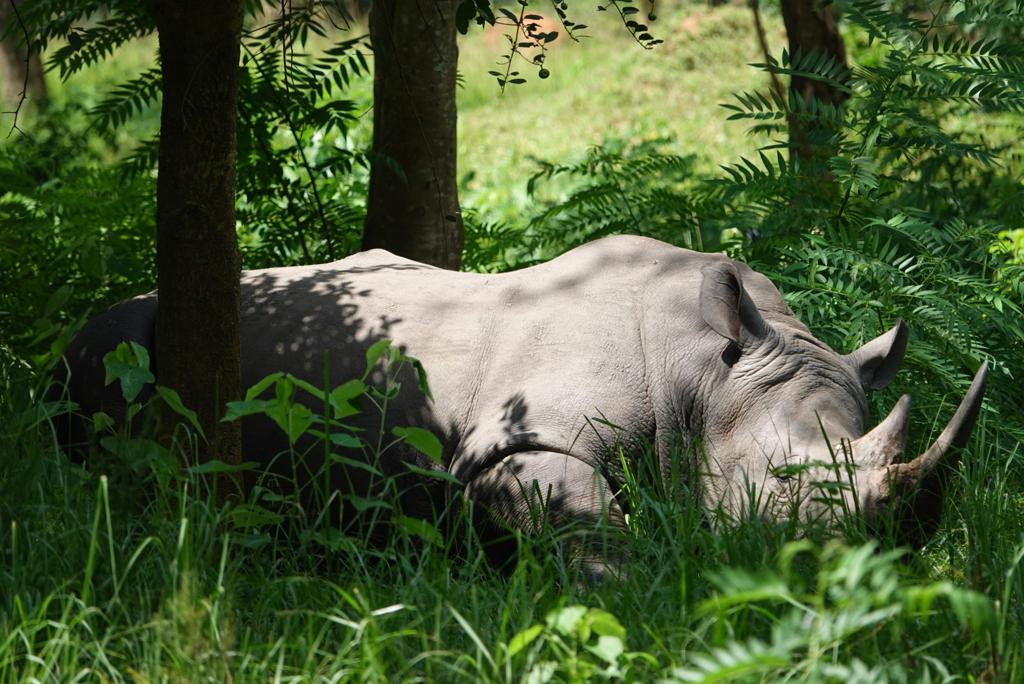Amazing Information About Rhinos

Amazing Information About Rhinos
These animals are big, bulky and absolutely brilliant!
- There are five different species of rhino:
- White rhino
- Black rhino
- Greater one horned rhino (also known as Indian rhino)
- Sumatran rhino
- Javan rhino

- The name rhinoceros means ‘nose horn’ and its often shortened to rhino
- These brilliant beasts are known for their awesome giant horns

- Javan and greater one horned rhino have one horn, whereas the white, black and Sumatran rhinos have two
- There are less than 30,000 rhino left in the wild due to poaching and habitat loss
- Three of the five rhino species are listed as being critically endangered
(black rhino, Sumatran rhino and Javan rhino)
- Rhino are an umbrella species – protect the rhino and you protect all the other species that share their habitat
- Both the white and black rhino are actually grey in colour – White rhino came from the Afrikaans word for “wide” and describes its mouth!
- These incredible creatures are some of the biggest animals in the world! The largest of the five species is the white rhino, which can grow to 1.8m tall and can weigh a massive 2,500kg – the same weight of 30 men!
- Despite their size, rhinos are herbivores (plant eaters) and love to munch on grass, plants and bushes!
- In Africa, white rhino are known as ‘grazers’ as they prefer the lush savannah grasses, while black rhino are known as ‘browsers’ as they prefer the bushes and trees of the dense thickets

- You can tell the difference between a white and black rhino by the shape of their mouths – the white rhino has a wide fat lip and the black rhino has a more pointed lip
- A rhino horn is made from a protein called keratin, the same substance that fingernails and hair are made up of

Rhinos are hunted by humans for their horns
- They poo about 23kg of dung in a day! However, the dung enriches the soil and helps feed a huge array of creepy crawlies, such as dung beetles!
- They often use stinky piles of poo to communicate with each other! These are known as ‘middens’
- The rhino skin is thick and protective
- They are very fond of wallowing in mud baths!
- Rhino are great diggers and excavate minerals from the ground using their horns and feet

- Whilst rhino have no natural predator they can get frightened really easily and their natural instinct is to charge at whatever has spooked them!
- Tapirs, horses and zebra are the closest relatives to the rhino. These animals are the odd-toed ungulates and their footprints resemble the Ace of Clubs!
- Females will reproduce every two and a half years and a calf will remain with their amazing mum for about three years
All Categories
Recent Posts
azass0 Comments
Birding Sports in Uganda.
azass0 Comments
Kidepo Valley National Park
azass0 Comments
Chimpanzee Habituation in Uganda
Tags
african buffaloes
African elephants
African elephants the big five safaris
Akagera national park
Albert rift valley
antelopes
article creator
bahima and there culture
biding in Uganda
bwindi impenetrable national parkrk
climbing lions
content generator
gamedrive in lake manyara national park
giraffes
gorillas
hyena
jinja city
kalinzu forest reserve
kibale forest
kibale national parl
lake albert
lake edward
lake george
lake Mburo national park
Lake Victoria
mabamba swamp
Mabira forest
mghahinga national park
mountain gorillas
mount mikeno
mt murungole
mt nyirango
murchision falls
queen Elizabeth national park
Rwenzori mountains
semuliki national park
semuliki river
shoebill
sippi falls
The batwa trail
uganda safaris
water bucks
western Uganda
why uganda is the pearl of africa
zebras
Quick booking process
Talk to Our Team
+256 393254072


